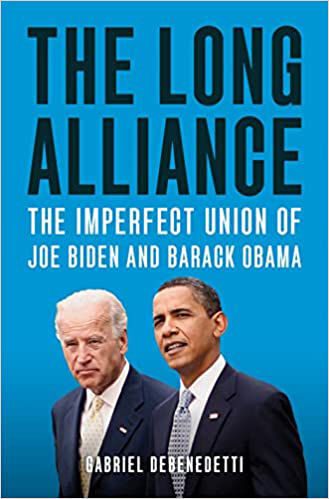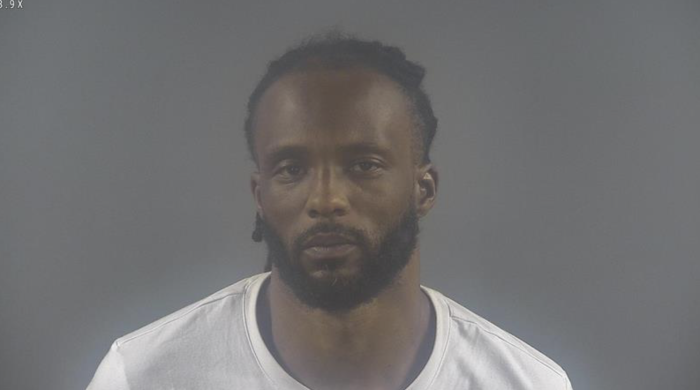Book review: ‘The Long Alliance’
Published 12:00 am Sunday, October 2, 2022

- BOOK REVIEW
”The Long Alliance: The Imperfect Union of Joe Biden and Barack Obama” by Gabriel Debenedetti. Holt. 432 pp. $29.99. Review provided by The Washington Post.
From its first pages, Gabriel Debenedetti’s “The Long Alliance: The Imperfect Union of Joe Biden and Barack Obama” makes clear its ideal reader. Political obsessives – especially those who closely observe Democratic Party politicians and operatives, eager to pull back the curtain and peek into their conversations and debates – are in for a treat.
Debenedetti, national correspondent at New York magazine, has written a colorful, highly detailed and scenic account of the last two decades of American politics, and specifically of the last two decades of American politics as experienced by Biden and Obama, together and apart. The first chapter details both men’s experiences during then-Sen. John F. Kerry’s presidential campaign, with a particular focus on the 2004 Democratic National Convention where Obama delivered the speech that catapulted him to political stardom. By the afterword, he’s led us through the first year of the Biden administration.
In between, we get their rocky start, with Biden’s less-than-glowing perception of Obama after a “sour” meeting in which the latter assured the former that he could afford a fancy dinner (and Obama’s offense that Biden didn’t think he could). We get the fallout from, and cleanup following, Biden referring to Obama as “the first mainstream African American who is articulate and bright and clean and a nice-looking guy” early in their 2008 presidential campaigns, and Obama’s selection of Biden as his running mate. We watch as their different styles play out in Obama’s first term, and read one extremely amusing anecdote in which Biden proves his loyalty to Obama by yelling at then-Rep. Anthony Weiner.
Part I ends with Obama’s 2012 campaign against Mitt Romney, and in particular with Biden’s debate against Romney’s running mate, Paul D. Ryan, in which Biden dismissed, belittled and otherwise laughed off Ryan for the better part of 90 minutes. “The reaction in Chicago was almost unanimous delight, and Obama, who watched on Air Force One on the way back to D.C. after a day of campaigning in Florida, exhaled,” Debenedetti writes. “Biden had reset Obama’s way of thinking about the rest of his showdowns with Romney, the president said.”
Part II takes us through to the present, dwelling on low points in the relationship as Obama hinted at his support for Hillary Clinton, his first secretary of state, to run in 2016, even though Biden (per Debenedetti) felt himself to be Obama’s more natural heir and to have a better understanding of the populist way the political winds were blowing. (We also glimpse Obama unconvinced that Biden is the right candidate heading into 2020.) And we witness high points, such as Biden leaning on Obama leading up to and after the passing of his son Beau.
Throughout, the story is told in detailed, colorful scenes. Here’s Jill Biden walking in, wearing a bikini with the word “no” written on her stomach to stop Biden from running for president in 2004; there’s Ron Klain, now White House chief of staff, pumping Biden up before the Ryan debate; there’s Obama calling Biden ahead of a crucial 2020 Democratic primary debate, advising him to “go out there and be president.”
It is all the more remarkable that the book is as descriptive, alive and scene-driven as it is given that, as Debenedetti shares in his note on sources, neither Biden nor Obama sat for an interview for the book. Despite that, he manages to paint full portraits of both men. It is perhaps a reflection of their different personalities that Debenedetti’s rendering of charismatic Obama crackles and pops more than his descriptions of Biden, who nevertheless comes off as perhaps the more sympathetic of the two, a loyal, ambitious, intelligent, gaffe-prone creature of both Washington and middle-class America.
Whether readers find this book satisfying will depend on what they are looking for. Those whose eyes glaze over at names like David Axelrod, Austan Goolsbee, Valerie Jarrett and Ted Kaufman, or who follow only the broad contours of American politics, may find themselves overwhelmed with the sheer quantity of detail – of names, dates, meetings and conversations in the halls of power in Washington and across America. And readers looking for a deeper analysis of the way we live and conduct politics now will not find it here. “The Long Alliance” does not explore in depth, for example, whether or how the period of Democratic politics it covers paved the way for Donald Trump’s ascent and presidency. Further, politics in this book sometimes seems to exist first as a way to win elections, not to improve the lives of people.
There are some passing paragraphs that invite reflection. In the chapter titled “2008-2009,” Obama, Biden and company are surprised to learn how few congressional Republicans are willing to work with them to save the nation, a realization that now seems downright quaint; in the chapter “2009-2010,” we learn that nobody in the White House took the radical right-wing tea party movement and its falsehoods about Obama’s health-care plan especially seriously at first, because “no serious Republicans were talking about this stuff.”
But Debenedetti doesn’t stop to unpack the significance of that and instead moves ahead to the next round of political posturing. This narrative strategy repeats throughout: There are moments when Obama or Biden seems to have a genuine insight (as revealed to Debenedetti through his own reporting, or as reconstructed by him through others’ writings), but it isn’t followed by the author’s analysis. For example, the description of various politicians’ opposition to the Trans-Pacific Partnership – which contains some of the book’s most telling details about where America was – is packaged in a sort of retelling of who was up and down politically in early 2016. (One thing readers will learn from this book is the truly astounding amount of time and trust placed in messaging and pollsters, respectively.) We have Biden telling Clinton campaign officials that they don’t understand White working-class voters. Does Debenedetti think that’s why Clinton lost to Trump? Is it part of the reason? The overwhelming reason? We don’t get a clear view of the answer, or of his assessment of what was at stake in any of this. Obama, we learn in the “2016-2017” chapter, was “exasperated that he’d never be able to live an apolitical life with Trump now defining the end of his presidency.” If Debenedetti sees irony in a president thinking that any American gets to live a life not shaped by politics, he doesn’t let on.
Nevertheless, readers interested in behind-the-scenes details and vividly depicted moments from the past two decades of American politics, starring some of its most pivotal players, will be riveted. The partnership between Biden and Obama is remarkable in that it is at once transactional and emotional. Readers of “The Long Alliance” will have a new appreciation of this uncommon bond after turning the book’s final page.
– Emily Tamkin is the U.S. editor at the New Statesman and the author of “The Influence of Soros” and “Bad Jews.”






